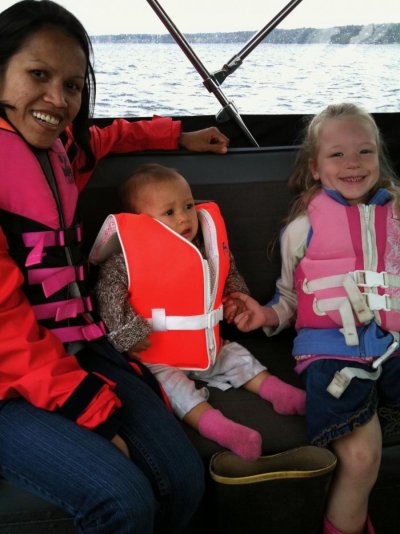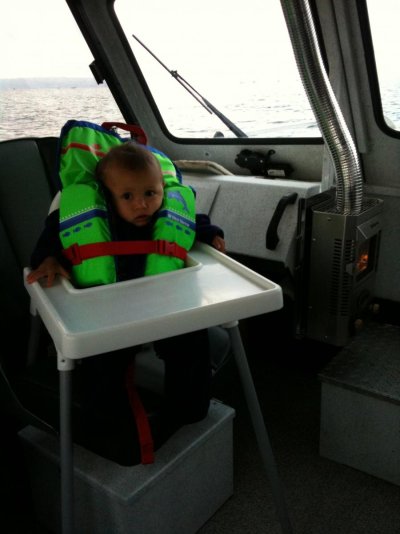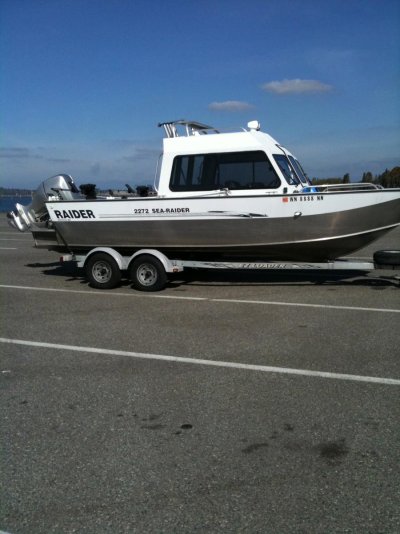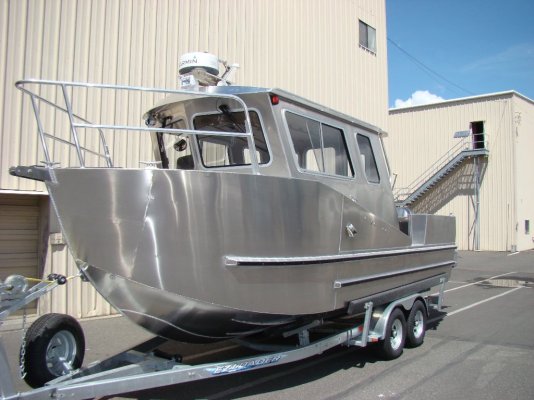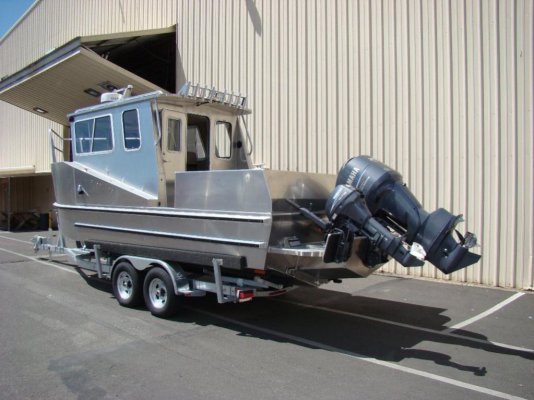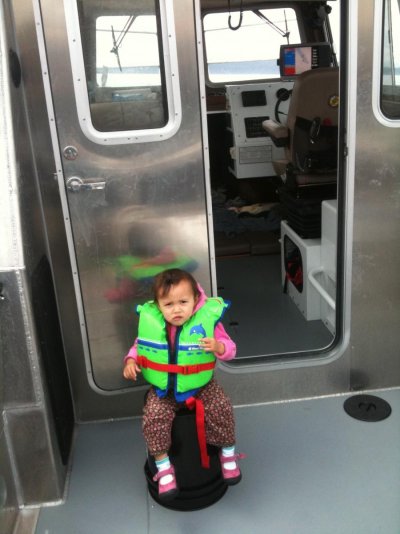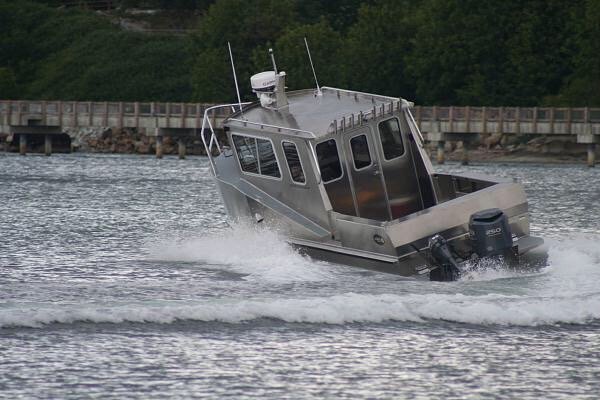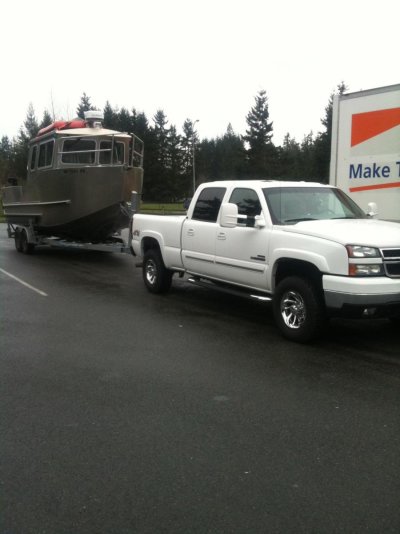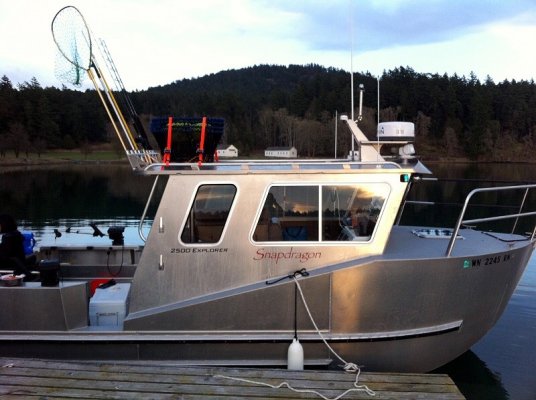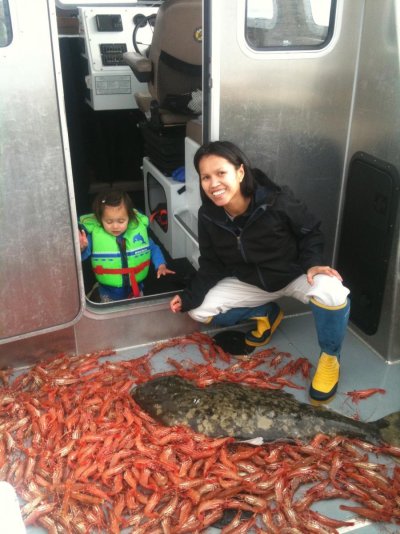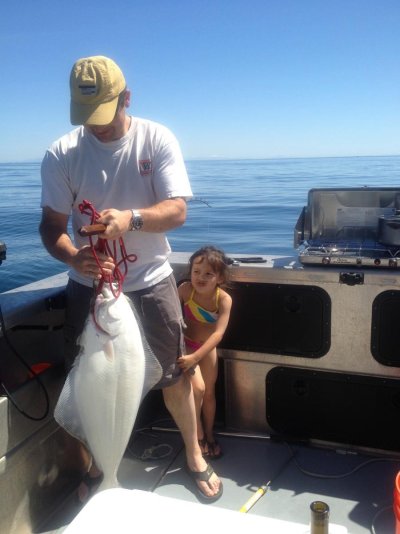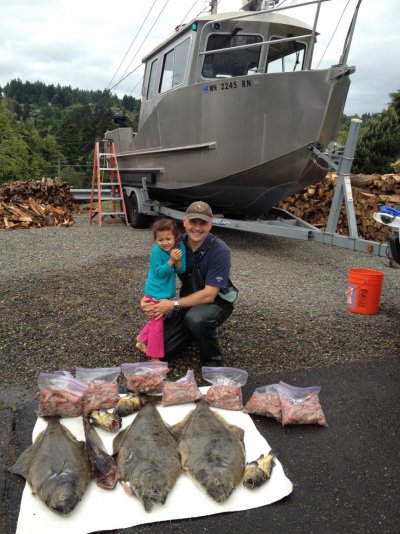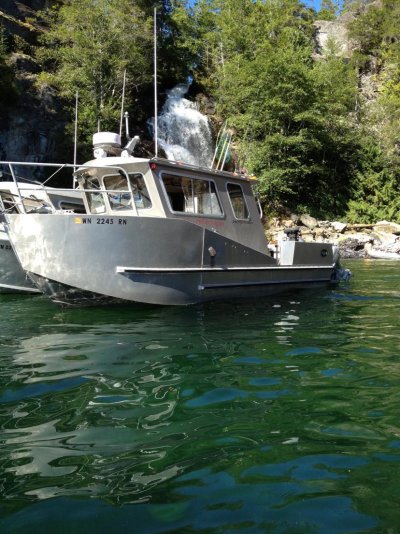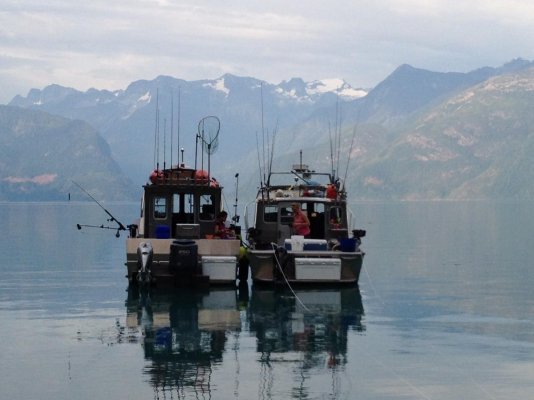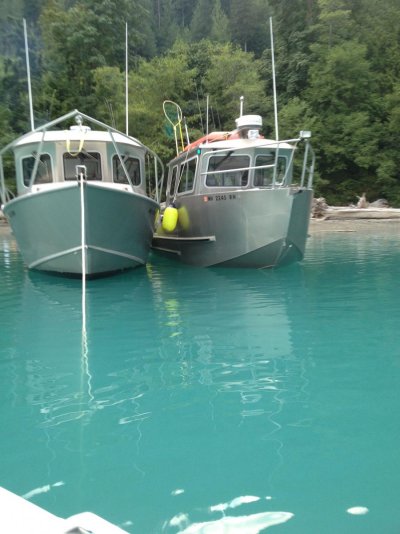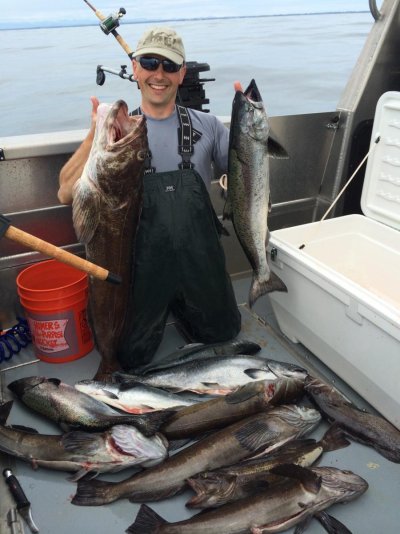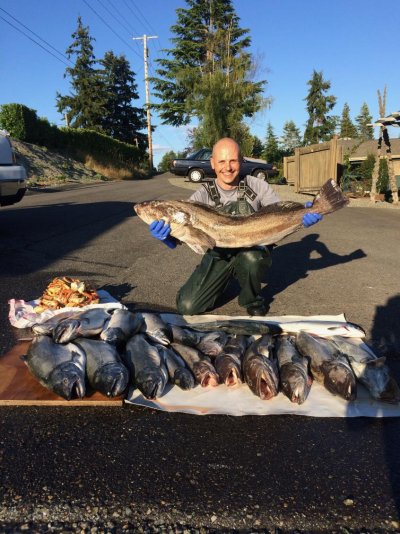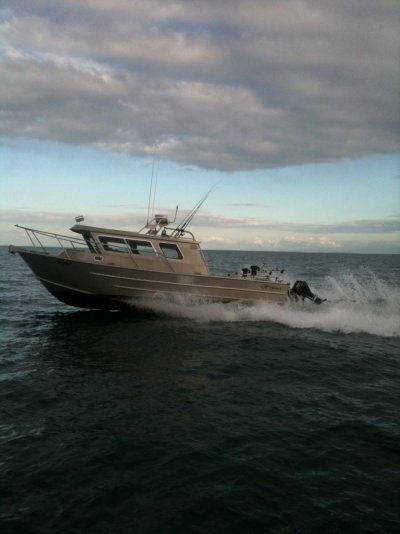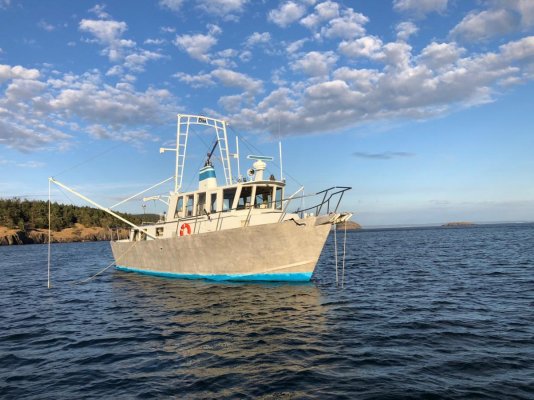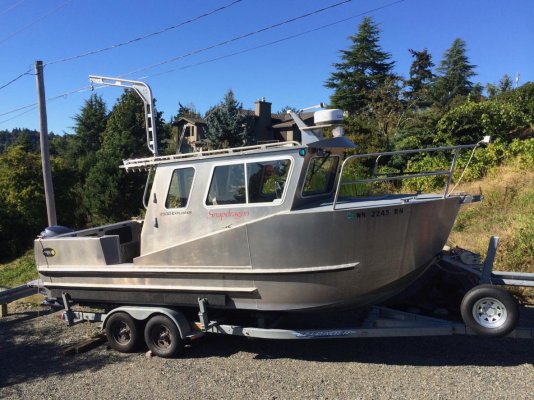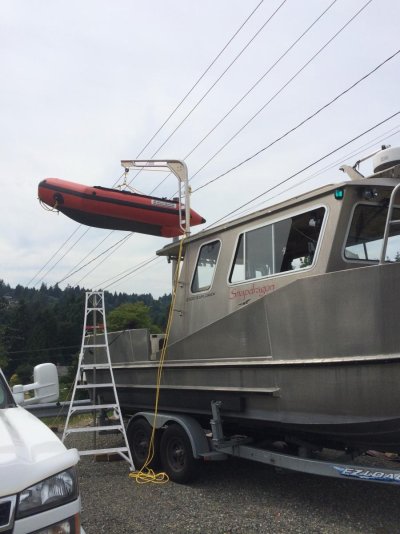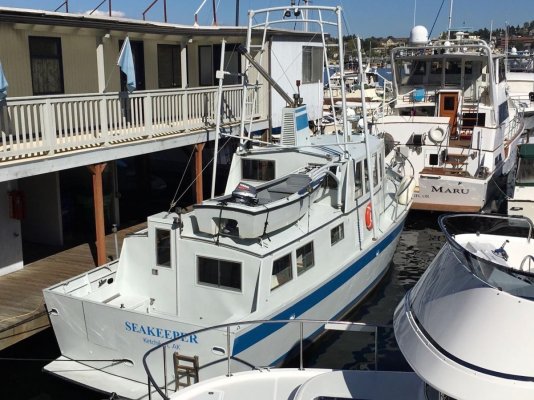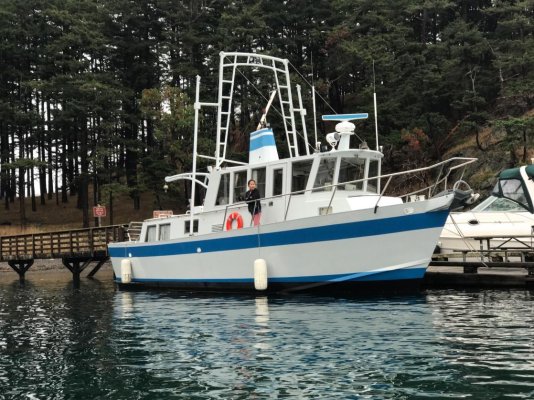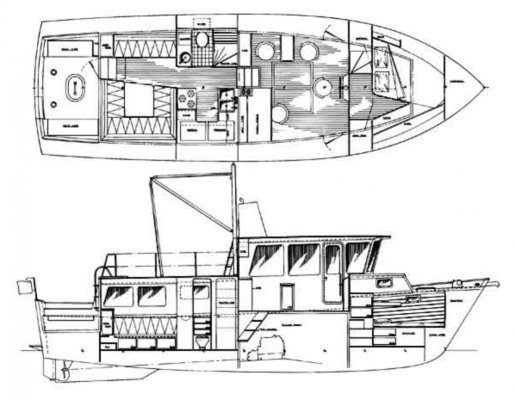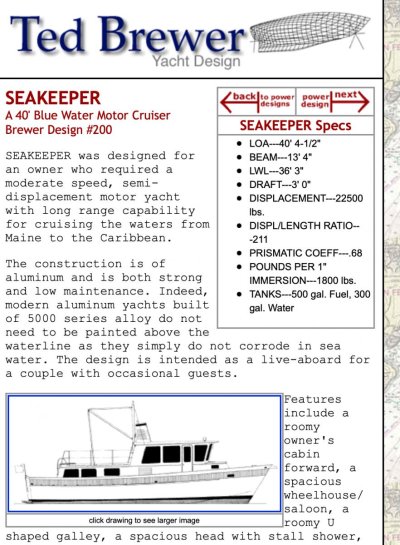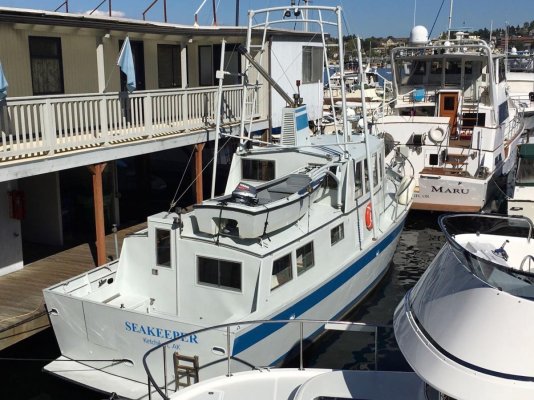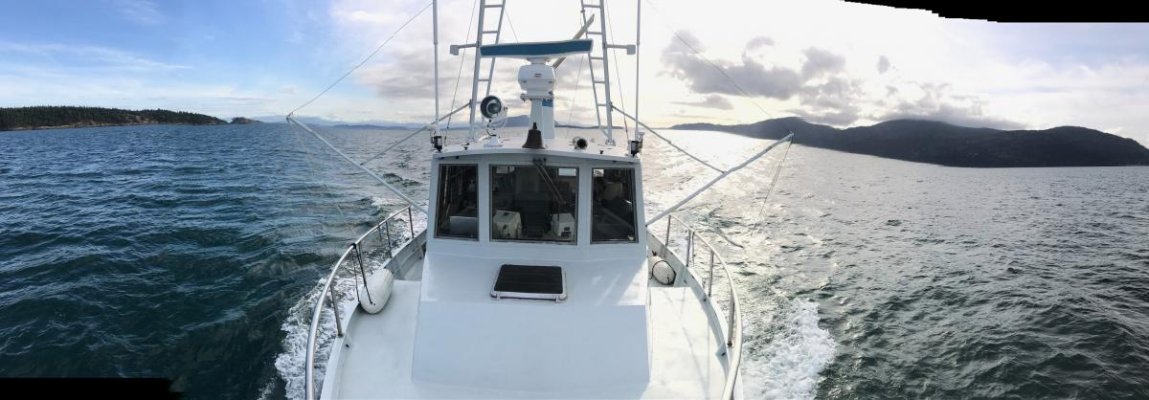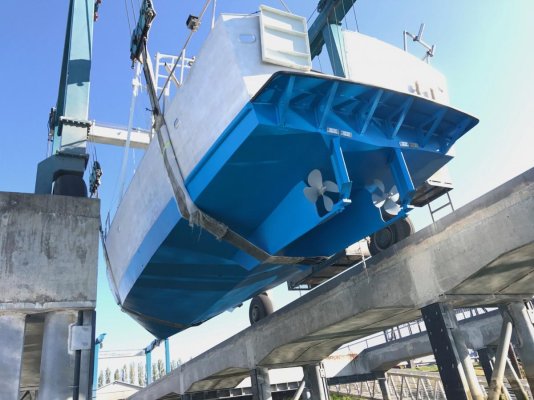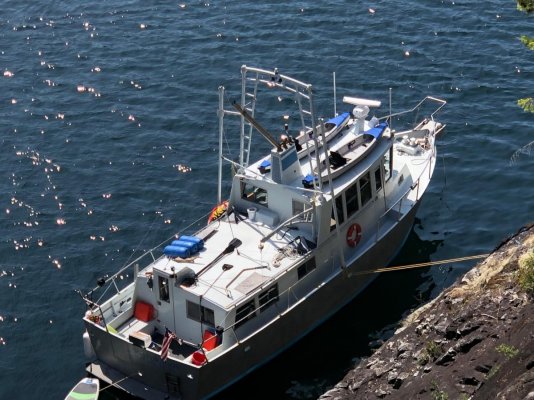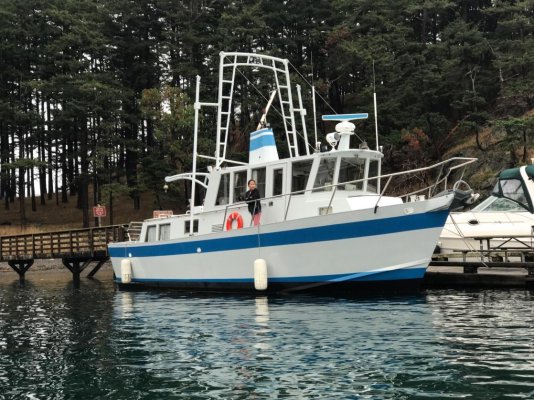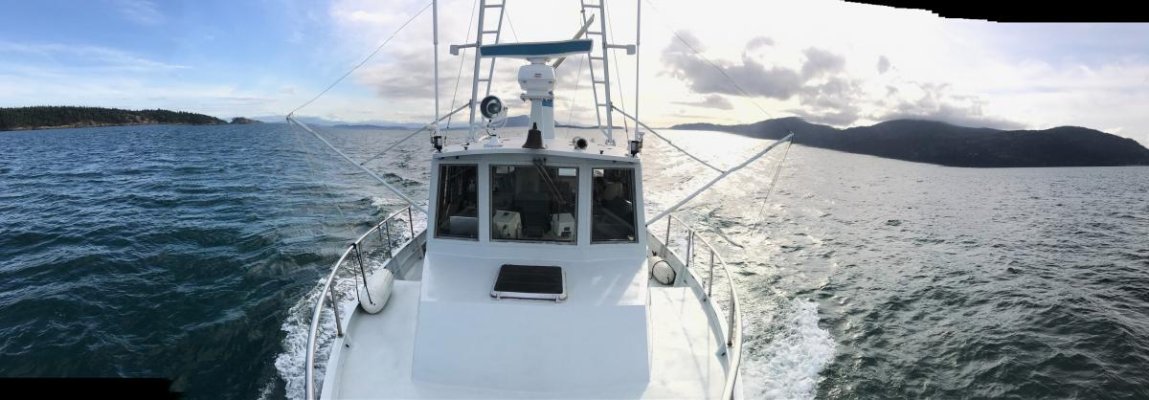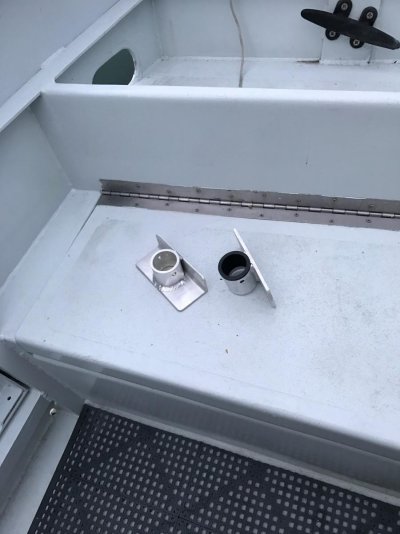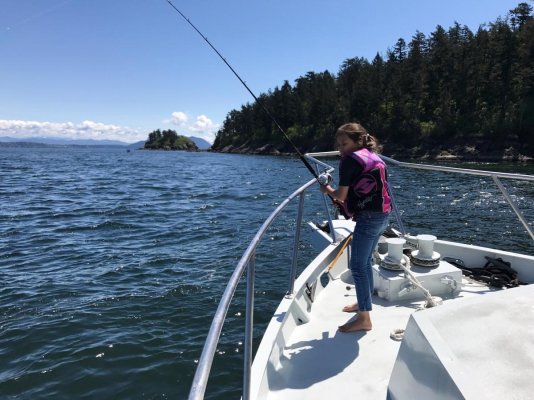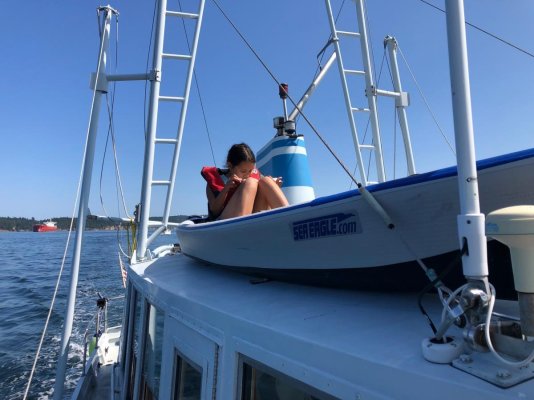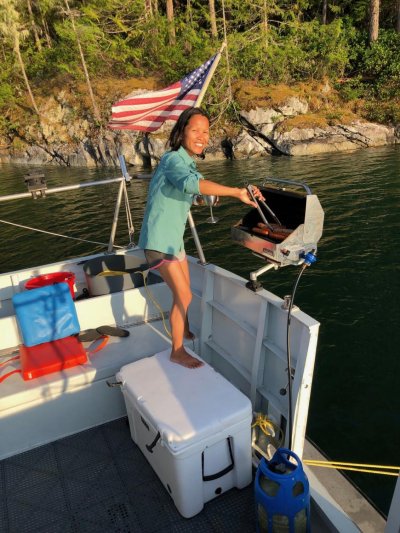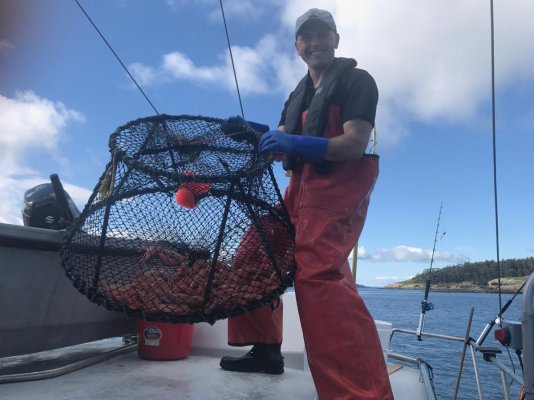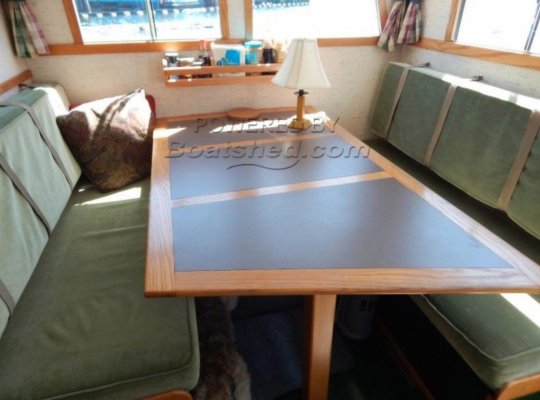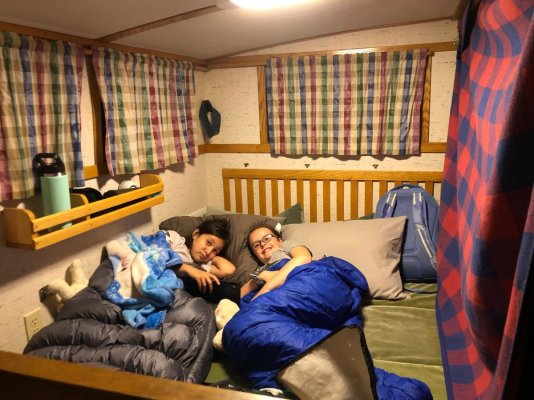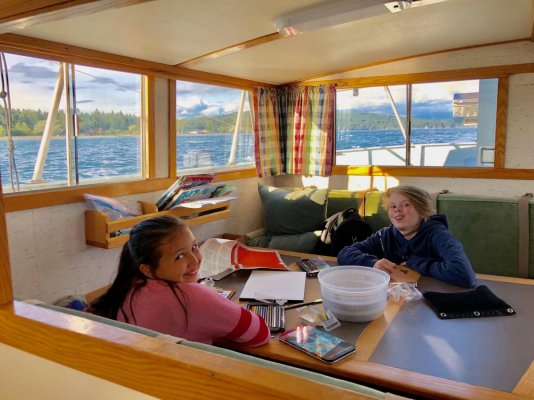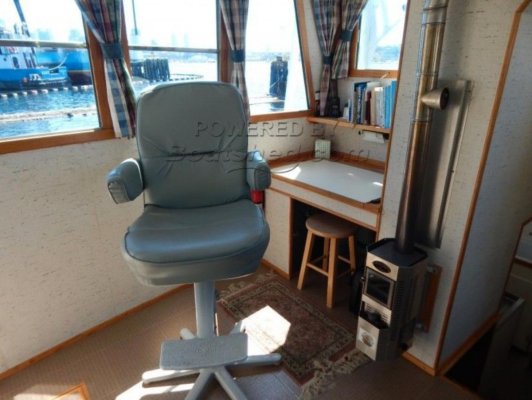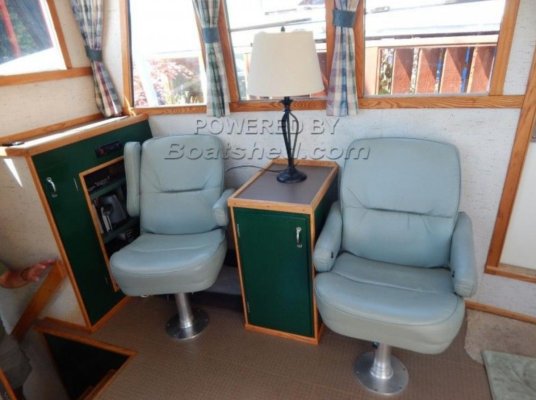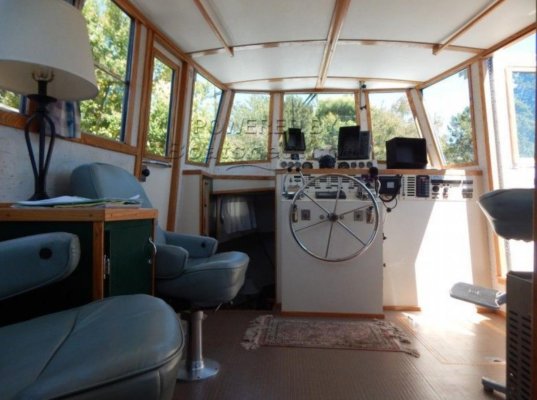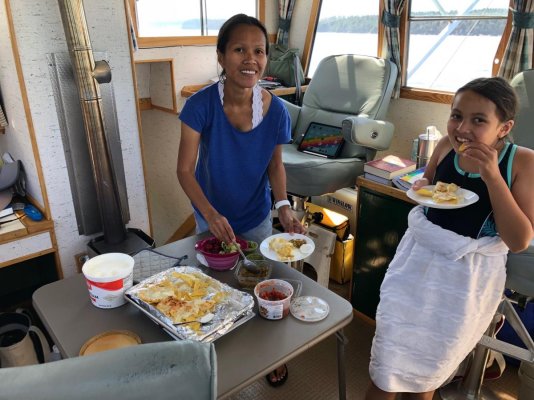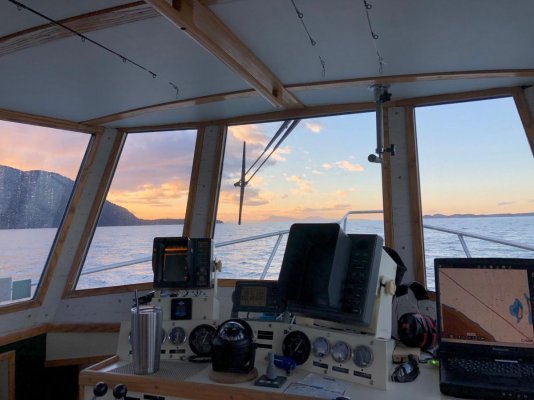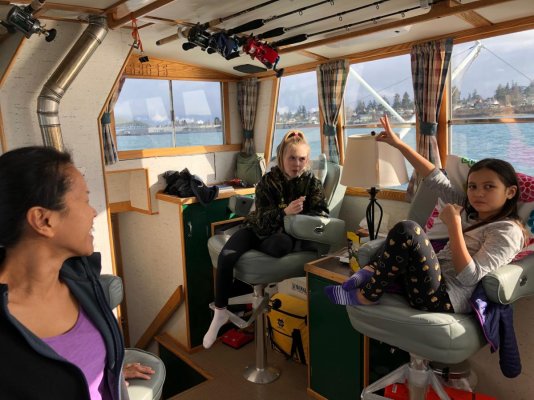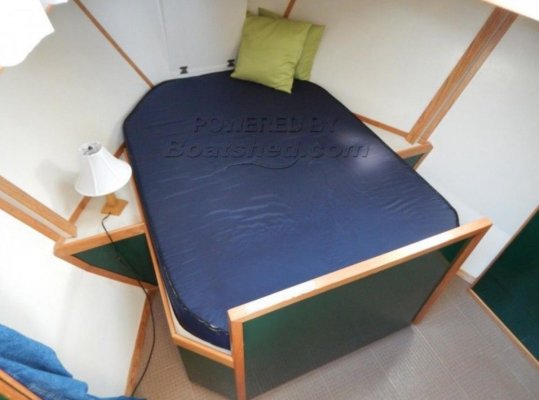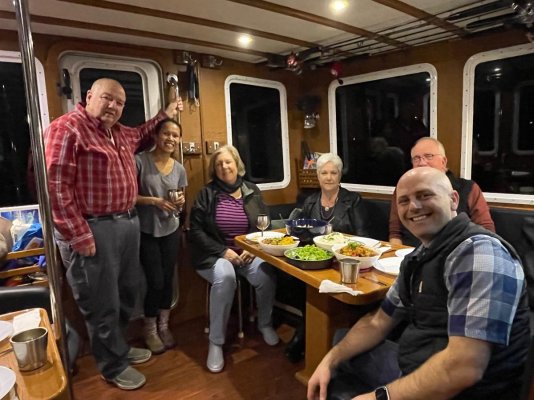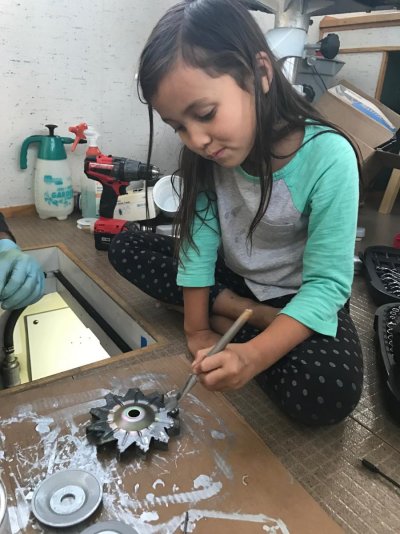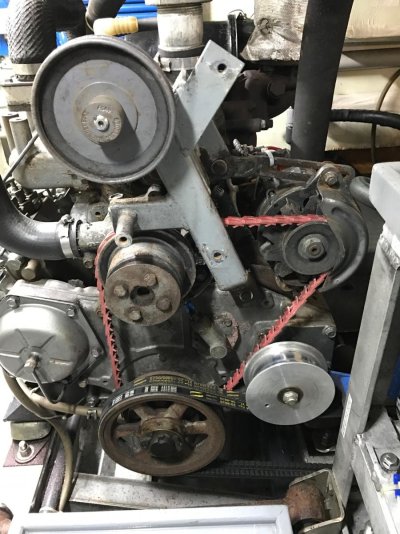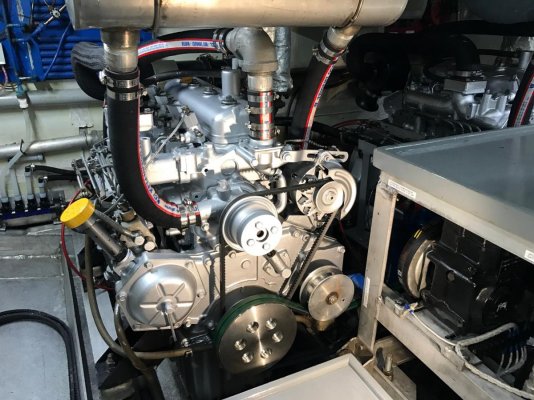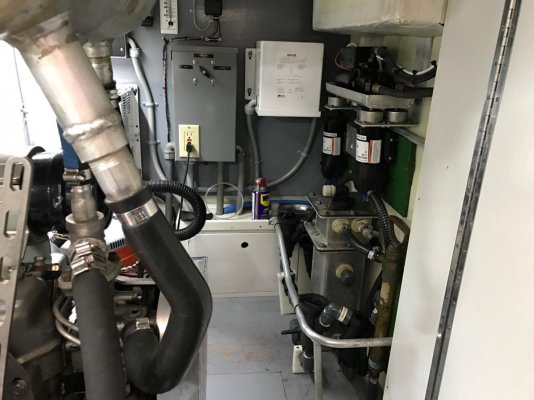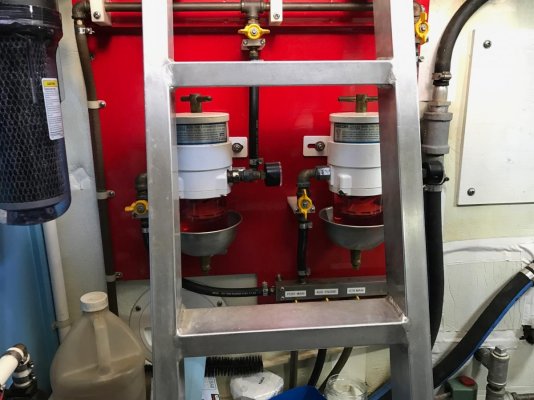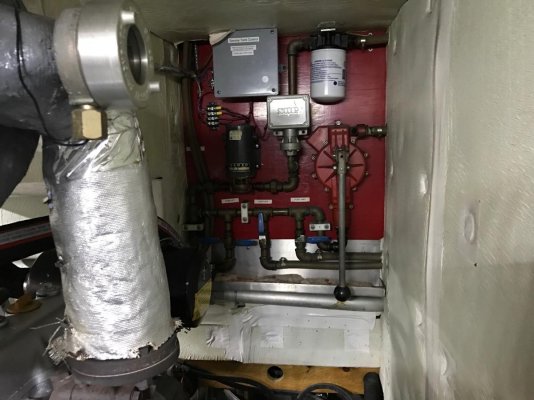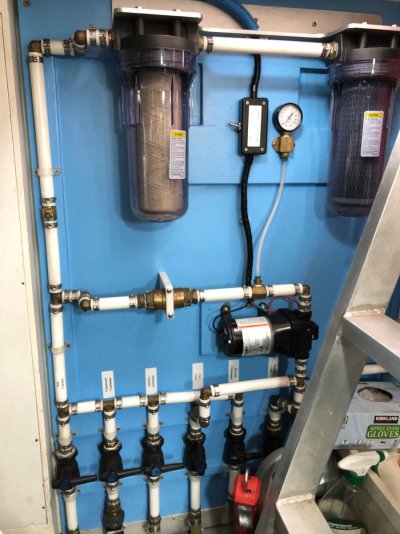Finally getting to the part where I can start droning on about the boats!
Things that were great about the ACB
-It was so fast. You could just go where you wanted to and it never took long, and you never had to think about the tide and current, which is very strong around our home waters. It was so much easier for fishing as you could get to the fishing spot super fast. Often times the place we want to fish is 10-15 miles from where we are spending the night. It was 20-30 minutes in this boat, but may be 2-3 hours in our trawlers.
- Because it was so fast, you had way more time to hang out at the destination, more time to fish, etc. You didn’t spend half the day just getting there. The downside was that the boat was way less comfortable for hanging out on. The seating was good for this type of boat, but not that comfortable for lounging around reading a book for hours on end.
- I feel in love with unpainted aluminum with this boat. It was so sweet. It always looked dirty, which meant it never looked dirty. It was so easy to care for, and I think it looks completely bad ass. Since owning this boat, unpainted Aluminum would be by far my first choice for dream boat construction.
- This thing was incredibly sea worthy. We took it out in some intense weather/bar crossings out of West Port in the Pacific. It would knock you around pretty good jumping off waves, but it would get you home.
- Well made Aluminum boats do not leak. We put this boat through extreme stress, and it never leaked a drop. There were almost no penetrations in it. Almost everything was welded on. The cleats, the handrails etc. It was so dry, and so low flex. Also, if something did leak, which never happened on this boat, but did on my next aluminum boat, there is no deck cores to get soggy and rot.
- Having it on a trailer was amazing in many ways. It allowed us to fish in the ocean, many weekends, which would be a multiday trip each way in our current boat. It was great to have the boat at home in the driveway to work on it and do maintenance. I keep my current boat 70 miles from my house up in Anacortes. I drive up there all the time to work on it. It kind of sucks, but it is super nice having the boat right up in the San Juan’s to use it. The drive is better now that I bought a sweet electric car. It was also nice loading and unloading all your stuff for a trip up right in your driveway, instead of transferring everything at the marina. It was especially nice where you are dragging a bunch of fish home.
- The boat was so small and nimble it made it fun and easy to go into unknown marina’s or sketchy small back coves and check them out. I was never afraid of running aground, or getting in big trouble getting in and out of a marina.
- It was so small it was easy to find space on docks at local state marine parks. It was often a fun social scene meeting other boaters on the dock. This was harder with our next 40’ boat, and almost impossible with our current 56’ boat. Small boat, fishing focused people seem way easier to make friends with on the dock too. They are never sitting inside watching satellite tv with the curtains drawn, they are out on the dock mingling.
- It was so good for fishing. Great visibility of your poles while trolling from the helm, something that has been a struggle on our trawlers. Great for back trolling, into the wind to keep you from drifting too fast while bottom fishing, something that doesn’t work at all in the trawlers. Easier to deal with other boats in crowded spots. In our trawlers we end up fishing way less often, and mostly in the ocean were there is way more room.
-It was easy to anchor in marginal spots. Small boat, super low draft, you could tilt up the outboard if you were worried about kissing the ground at low tide. It was always easy to find a spot to anchor in crowded harbors.
-It had a Webasto forced air Heater that was a great piece of kit, especially for a small boat like this. I will likely have more to say on boat heating systems in a future post here. I have experience with all the major types.
-Fishing was a good excuse to get out and use the boat a lot. There was always some opener, or season coming up that you wanted to get out and take part in. It got us out using the boat many dozens of times in winter, and other horrible weather when we probably would have just stayed home otherwise. It got the the point that at one time I had to declare that it was a new family rule that we do not launch the boat if it is currently a gale warning. We did not make this rule after the first or second time we did this.
Things that were not so great about the ACB
-It really was camping aboard. We used it a lot, all year round, and there were many times when we were out in the dark, in 40 degree rain, cooking dinner on the camp stove, or washing dishes in a freezing bucket of salt water. Pooping and peeing in a bucket on the back deck was ok when our daughter was in diapers, or 4 years old, but she would not be down with it now that she is 14.
-Trailering was amazing in some ways, but sucked in others.
-It was a big boat and was super stressful to drive.
-The launch ramps were often a zoo.
-Fisheries enforcement would often put you through a shakedown at the boat ramp.
-I had a ton of problems with the brand new, name brand trailer.
- They included flat tires on 3 different occasions.
-I had a brake stick, heat up, melt the liquid oil seal dumping the oil on the hot brake and burst into flames driving down the freeway. That was when I discovered that the boat and trailer were too tall to put on a flatbed tow truck as they would hit the overpasses.
-After one of the flat tires I failed to torque the lug nuts when I set the trailer down after changing it, and the wheel flew off going down the freeway.
-A lady pulled in behind me while I was trying to back up, and I couldn’t see her. The guy I had asked to help me back up was standing there watching and didn’t say or do anything as I slowly backed the end of my outboard through her back window.
-The surge brake mechanism failed after about 3 years
-I finally ended up replacing the entire brake system, disks, calipers, lines, and changed from serge brakes to electric over hydraulic. I had less problems after that, and it felt way safer to drive as the electric over hydraulic brakes worked better.
-A guy hit me in a boat ramp parking lot with his trailer, and destroyed my trolling motor. It was an insurance/installation nightmare.
-I hated the Chevy Durimax truck I had to keep to tow the boat. For such an expensive truck it was such a piece of ****. The only good thing was the engine/transmision drive train. Everything else was a disaster. The paint started peeling off it less than 5 years old. It had a ton of electrical problems, plastic trim pieces kept falling off. One time the tail light just fell out while I was going down the road and was hanging by the wires when I got home. Selling that truck was the best part of selling the ACB
-On longer trips not having refrigeration or freezers was a constant struggle, especially with the amount of fishing we were doing. I ended up getting a commercial ice machine, and an embarrassing collection of very expensive coolers.
-The boat was not super comfortable for just hanging out in one spot. We would never want to just drop anchor and hang out for a couple days in one spot. The trawlers are much better for this.
-Due to the camping nature, my wife could not do the serious cooking that she really enjoys. She is as insane with cooking as I am with boats. The trawlers are much better for this, and the whole family enjoys the eating.

